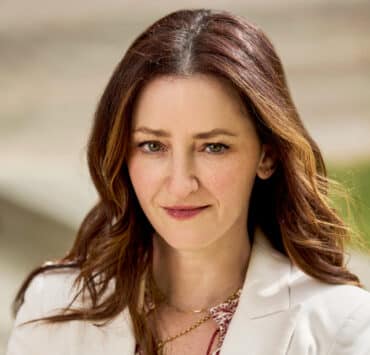|
Getting your Trinity Audio player ready...
|
Every initiative, every measure, and every proactive move Adrin Mammen and Jeffrey B. Short have enacted is summed up by Mammen in one perfect quote: “Our stance has always been to meet people where they are.”
Mammen, who serves as Montefiore Health System’s associate vice president and patient access transformation officer, and Short who serves as its vice president, transformation officer, chief of staff, and leader of the faculty practice physician group have cultivated an enduring partnership that has created staggering results in just a short timeline.
Prior to the COVID-19 pandemic, Mammen and Short had embarked on an extensive digital transformation journey on behalf of the health organization. “We had started putting a road map together to expand patient access, improve productivity, and drive patient satisfaction,” Mammen explains. “Once we established our priorities, we started mapping out sequentially what, why, and how it was that we wanted to accomplish. Then the pandemic happened.”
The Silver Lining of Pandemic Transformation
For most healthcare organizations, the pandemic meant the grinding halt of any projects or initiatives not explicitly related to fighting COVID-19. It might be because of Mammen’s Baldrige National Examiner training, her Lean Six Sigma Black Belt, or her Six Sigma Master Black Belt, but she and Short saw the situation differently.

“The pandemic accelerated innovation in many different sectors by as much as ten years. Healthcare was no different,” Short says. “Regulators quickly removed reimbursement and regulatory barriers, and our clinicians and patients were willing to try telemedicine out of necessity. Suddenly thousands of patients and clinicians were using telemedicine. This rapid adoption transformed healthcare from a face-to-face business to one that was now a mixed model that includes a large virtual or online segment.”
“The pandemic allowed us to leverage a lot of the great work that we had done, and to do it quickly,” Mammen says. Working nimbly, they were able to transform their already existing plan and, essentially, put it into overdrive.
A telehealth program often requires one-to-two years to properly stand up in most healthcare settings. At Montefiore, the organization went from five telehealth visits in 2019 to 637,000 from March to December of 2020 alone.
“Key to the progress that was made is the leadership structure employed during the pandemic,” Short notes. “A central command structure was set up that simplified decision making and allowed us to quickly make decisions and allocate resources to key initiatives.”
The transformation begs an in-depth study of its own, but Mammen pauses. “That was just telehealth,” she says.
The success and blowup of the telehealth program got the transformation team thinking about the health system’s scheduling process. “We were trying to get more and more appointments scheduled online because we were setting up COVID-19 vaccinations and our phone lines were being flooded,” Mammen explains.
Defied Expectations
Mammen says embracing online scheduling meant deconstructing some long-held beliefs about Montefiore’s patient population. “Our patients are located in the Bronx in New York; they’re a very socioeconomically diverse population, and a lot of our patients don’t speak English as their primary language,” Mammen says. Right or wrong, the AVP says expectations suggested that Montefiore’s patients may not have internet access in their homes due to economic instability, and that a lack of digital literacy may keep its patients from engaging online.
“We needed to take the chance and try to meet people wherever they are,” Mammen says. “If they want to engage with us digitally, we’ll be there for them. If they want to engage with us over the phone, we can meet them there as well.”
Mammen, Short, and the transformation team quickly found that questioning long-held beliefs was the right move. Montefiore discovered not only were its patients engaging digitally, but it had patients engaging via mobile devices in huge swaths of the area. “We’re able to engage with our patients via SMS and mobile apps,” Mammen explains. “The first month we rolled out our telehealth mobile app, it was in the Top 100 of the Apple App Store’s healthcare section.”
“The acceleration of online visits allowed us to engage patients and clinicians and create rapid learning cycles. We quickly gained insights on how to improve the experience and the process,” Short adds. “We learned about the importance of the ability to launch a visit without the need to download an app first. We also learned how vital in-visit translation was for our diverse patient base. The learnings came quickly, and we were able to react quickly.”

So, the transformation team went further. A chatbot was installed on the Montefiore website that uses artificial intelligence to help patients find the information they need quicker. Specifically, conversational AI enables the chatbot to update in real time with new information about the pandemic, vaccinations, or more common queries.
“We didn’t have to go in and change code every time we needed to update information, because the AI was doing it for us,” Mammen explains.
With that, the transformation team returned to its goal to help patients not only find information about their doctors or treatment on its website but also schedule appointments without picking up the phone. In August of 2021, Montefiore rolled out an interactive online directory that will allow patients to identify the appropriate physician based on their condition or specialty.
“We will use clinical focus terms to match patients with providers based upon their clinical need, using layman’s language,” Mammen says. “You can search for ‘diabetes’ or ‘back pain’ and will find who you’re looking for.”
“We are thrilled that Montefiore Health is advancing their digital front door using symplr Directory,” says Tom White, CEO and founder of Phynd and now general manager of symplr, which acquired Phynd in February 2021. “Adrin is a visionary patient access and transformation leader and is driving Montefiore to deploy a modern digital patient experience using the symplr provider data platform. Our partnership will help Montefiore Health fulfill their mission and bring operational efficiencies to their entire enterprise, strengthening Montefiore’s position as a healthcare leader in the New York City area.”
That’s only phase one. Phase two will include the ability to self-schedule an appointment online. By the end of the year, Mammen hopes 5 to 10 percent of Montefiore’s appointments will be scheduled online.
Proactive Care
“I believe we are currently in the ‘golden age’ of healthcare,” Short says. “The present healthcare marketplace, due to the COVID-19 pandemic and other contemporary factors, is hungry for change in terms of digital transformation.
“Patients simply demand what the banking and travel industries have given them: self-service, on-demand access,” he continues. “Now we must deliver the ability to schedule medical appointments just as easily as people can check their bank balance or book a flight. These are things we at Montefiore are already actively working on.”
Mammen says Montefiore’s goal is to reduce the demands on patients while simultaneously improving their health outcomes. If an economically struggling patient can receive the care they need via telehealth visit—that will not require them to take a half or whole day off work—Mammen and Short want to make it happen. If the health system can find ways to engage with patients proactively to receive automatic communications to schedule their next appointments or refill a prescription, Mammen and Short want to make that happen, too.
And for the transformation team at Montefiore, it’s about far more than wanting. The team is already down the path.
“There are so many ways that I think we can be more proactive about managing our patients’ care,” Mammen says. “It’s something I’m thinking about all the time. And I really think we’re going to do it.”

